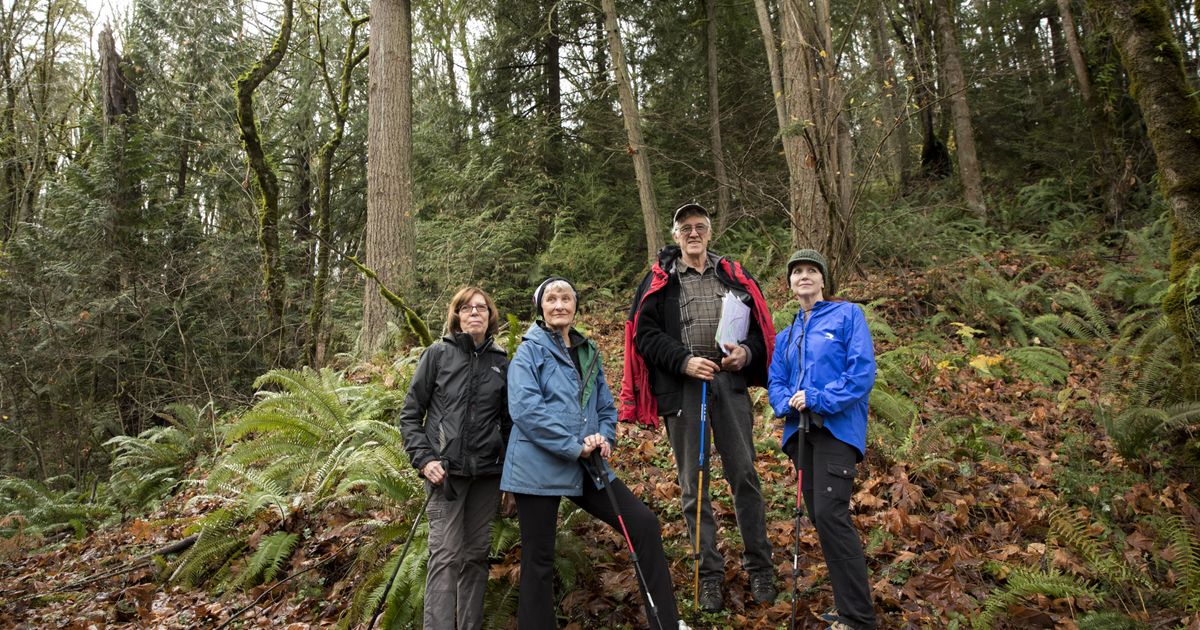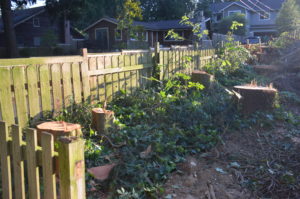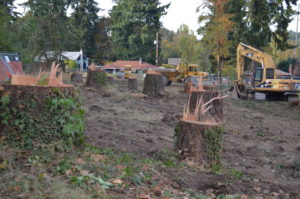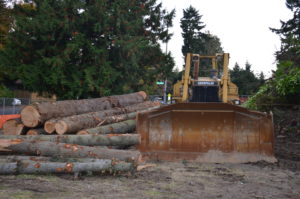Category Archives: private land
Seattle Urban Forestry Commission feedback on King County’s 30-year Forest Plan
The Seattle Urban Forestry Commission made the following recommendations to King County regarding it’s 30-year Forest Plan. You can see the original letter here.
March 11, 2020
Christie True, Department of Natural Resources and Parks Director
King Street Center, 201 S Jackson St
Seattle, WA 98104-3855
Dear Director True,
The Seattle Urban Forestry Commission (UFC) thanks Sarah Brandt for her updates regarding King County’s 30-year Forest Plan. The UFC supports this undertaking on a county level because of the complexity and interaction of the many different land uses and environmental issues involving forestry across the county.
King County is well-positioned to coordinate and share best practices and planning across the county by bringing together the many diverse stakeholders that benefit from and are impacted by decisions affecting our forested landscape. Seattle and other cities in King County have overlapping interests in maintaining, protecting, and
enhancing the benefits that urban forests provide to their dwellers. The following suggestions for the County may help municipalities better manage environmental concerns relating to forestry.
Assist Collection of High-Quality Tree Canopy Cover Data across the County
Without good data on trees and canopy cover, municipalities manage urban forests in the dark. The UFC suggests that King County could assist in periodic LIDAR studies to measure canopy cover across the county to provide baseline data for all cities, towns, and unincorporated areas in the county. Importantly, these studies
should be repeated at least every five years. These data will allow decision makers to assess gains and losses in tree canopy over time.
The UFC recommends that these studies measure canopy volume in addition to canopy cover. King County is losing large trees, especially in cities. Replanting with small trees may give a similar canopy area over time but does not fully replace the benefits large trees provide particularly well, including carbon sequestration,
stormwater mitigation, air quality improvement, wildlife support, and heat island impacts reduction. A LIDAR study can also help to clarify forest species diversity by doing a leaf off study to determine the percentage of evergreen and conifer species in an area.
Consider Cumulative and Ecosystem Level Impacts
Sharing information on climate impacts to trees and forests and ensuring species diversity and resilience is important. Looking at the total ecosystem impacts must be considered. Forestry is more than just trees. It includes associated plants, shrubs, and wildlife. The totality, interrelationships and functionality of forests, both
rural and urban, must be considered as the region grows in population.
Take Stock of and Value King County’s Natural Capital
Seattle is starting a Natural Capital Assessment to assign dollar values to its natural features and the benefits they provide. King County should consider a similar assessment as part of its forestry plan.
Convene Stakeholders, Leverage Partnerships, and Share Resources
Another way that King County can assist urban areas is by working with entities like the Washington State Department of Natural Resources’ Urban and Community Forestry Program, the US Forest Service’s Urban and Community Forestry Program, and King Conservation District in organizing workshops for municipalities to develop effective tree and urban forest ordinances and management plans. Convening stakeholders to discuss challenges and opportunities would greatly benefit the County in implementing an effective forest plan. By leveraging partnerships and sharing resources, cities across the county can manage urban forests in a regionally
coordinated manner and improve on efforts from work done in other areas.
The UFC also urges King County to make efforts to include other entities in its outreach and future involvement. These include dealing with Washington state entities like the Washington State Department of Transportation and the Washington State Department of Ecology as well as Federal Agencies that own land in King County.
Other important entities to include is exploring ways to involve school districts and students in efforts to protect and increase forests. These will be their forests in the future.
Consider a County-level Urban Forestry Advisory Board
King County has already created a Rural Forestry Commission. There is a need for a similar board for urban areas. Multiple tree and urban forest protection ordinances and management plans exist across the county. Each municipality has its own process for drafting and updating these ordinances and plans. While the basic issues are similar, cities act independently and frequently lack the resources and expertise to evaluate the benefits or problems associated with different ways of regulating tree and forest protection. The County could help coordinate efforts.
Thank you for your outreach and efforts to create a 30-year Forest Plan for King County. The UFC supports your efforts and looks forward to working with you.
Sincerely,
Weston Brinley, Chair; Steve Zemke
cc: Mayor Jenny A. Durkan, Council President Lorena González, CM Lisa Herbold, CM Debora Juarez, CM Andrew Lewis, CM Tammy Morales, CM Teresa Mosqueda, CM Alex Pedersen, CM Kshama Sawant, CM Dan Strauss, Jessica Finn Coven, Michelle Caulfield, Josh Baldi, Warren Jimenez, Sarah Brandt, Jessica Engel, Kathleen Farley Wolf, Paúl Quiñonez Figueroa
Sandra Pinto de Bader, Urban Forestry Commission Coordinator
City of Seattle, Office of Sustainability & Environment
PO Box 94729 Seattle, WA 98124-4729 Tel: 206-684-3194 Fax: 206-684-3013
www.seattle.gov/UrbanForestryCommission
WA Scotch Broom Census Set for May 2020
For Release: April 28, 2020
Contact: Justin Bush
Washington Recreation and Conservation Office
Cell: 360-704-0973
Scotch Broom Census Set for May
OLYMPIA–The Washington Invasive Species Council, state agencies and researchers are calling for a census in May to help determine the location of Scotch broom throughout the state.
“We need everyone’s help to size up the problem,” said Justin Bush, executive coordinator of the Washington Invasive Species Council. “Without baseline information about the location and population size, we don’t have enough details to determine solutions. The information from the census will help us set short- and long-term action plans.”
Yellow flowered, Scotch broom is hard to miss when blooming. It can be found in 30 of Washington’s 39 counties. While known to be spread across the state, specific locations and patch sizes are not well documented, leading to the council’s call for a month-long census.
How to Participate in the Scotch Broom Census
“We’re asking people to send us information from their neighborhoods,” Bush said. “The information can be transmitted easily to the council by using the Washington Invasives mobile app or by visiting https://invasivespecies.wa.gov/report-a-sighting/. Sightings should include a photograph of the plant that shows enough detail that the plant can be verified by an expert. A description of the size of the patch is also helpful, such as whether the patch is the size of a motorcycle, a car, a school bus or multiple school buses. Photographs also can be shared with the council on Facebook, Instagram and Twitter by using the hashtags #TheGreatScotchBroomCensus and #ScotchBroom2020Census.”
Scotch broom is a problem because it crowds out beneficial native species and clogs healthy habitats. It can form dense, impenetrable stands that are a problem for grazing, farming and recreating and it creates fire hazards. Dense stands may prevent or slow forest regeneration and harm sensitive areas near streams and wetlands. Scotch broom also produces toxic compounds, which in large amounts may poison grazing animals.
While widespread and not likely to be fully eliminated from the entire state, action is being taken to remove Scotch broom from parks, roadsides, forests, riverbanks and other at-risk landscapes. The information from the Scotch broom census will help invasive species managers better understand the needs of landowners and managers.
“We don’t have the resources at a state or local level to remove every Scotch broom,” said Greg Haubrich, pest program manager with the Washington State Department of Agriculture. “But organizations like your local noxious weed control board can provide education and technical assistance so that you can efficiently and effectively manage Scotch broom on your property. In some instances, there also could be cost-share funding available from your local conservation district to remove your Scotch broom.”
What You Can Do to Prevent the Spread
When around Scotch broom and any other invasive species, care should be taken not to inadvertently spread it to new locations. Each mature plant can produce thousands of seeds, which are viable up to 80 years. Taking precautions not to move seeds on boots, tires, pets or vehicles is very important.
“Scotch broom is widespread, but it is not everywhere,” Bush said. “By taking simple precautions, you can prevent the spread of this invasive species. Clean your boots, bikes, pets, vehicles and other gear before you venture outdoors to stop invasive species from hitching a ride to a new location. Conversely, follow the same practices before you head home to protect your own property.”
People that have Scotch broom or would like to get involved in stopping it can find additional help with an online seminar series June 2-4 being organized by the council and its partners, who are working together to share the newest information from throughout the Pacific Northwest so everyone can better address this shared problem.
- Event Web page
- Sighting report form and apps
- County distribution map
- Species information and photographs
- Contact information for county noxious weed control boards
- Local conservation districts contact information
- June 2020 Scotch Broom Ecology and Management Symposium
Julia McNamara
Administrative Assistant
1111 Washington ST SE
Olympia WA 98501
Mailing Address
PO Box 40917
Olympia WA 98504-0917
(360) 902-2956
Explaining why key provisions are in the 2019 Seattle Urban Forestry Commission draft Tree and Urban Forest Protection Ordinance
In June 2019, The Seattle Urban Forestry Commission submitted, at the request of Seattle City Councilmember Sally Bagshaw and Lisa Herbold, a draft Tree and Urban Forest Protection Ordinance to the Seattle City Council and Mayor Jenny Durkan.
The Coalition for a Stronger Tree Ordinance is urging the public and organizations to submit letters of support on the draft ordinance through the website www.DontClearcutSeattle.org. A pre-written draft letter for individuals is available on the site to which additional comments can be added. A draft resolution is available for organizations to use to express their support.
Here is some further explanation on each item mentioned in the support letter for the Urban Forestry Commission’s draft Tree and Urban Forest Protection Ordinance.
1. Expand the existing tree removal and replacement permit program, including 2-week public notice and posting, as used by the Seattle Department of Transportation (SDOT) – to cover all trees 6” DBH and larger on private property in all land use zones, both during development and outside development.
Explanation – Seattle currently has a complaint based system to monitor tree removal. It doesn’t work because people only know a tree is being cut down when they hear the chain saw. Many trees are removed illegally. Exceptional trees on private property as defined by Director’s Rule 16-2008 are not to be removed unless hazardous. The first sign a tree is being removed is usually hearing a chain saw or seeing the tree gone when they pass by. Many other cities like Portland,OR; Atlanta, GA; Vancouver,BC and locally Sammamish, Shoreline, Mercer Island, Redmond, Lake Forest Park and and Bellevue all require permits before trees can be removed,
According to the Seattle Forest Ecosystem Values Report , 6″ DBH (diameter at 54″ high) and larger trees represent about 45% of the trees in the single family zone. That means 55% are smaller than 6″ DBH. A Douglas fir at 6″ DBH is about 30 years old.
During development and outside development – also means property on which construction is occurring and property on which construction is not occurring.
Notice – posting is to let neighbors know if a tree is legally being removed.
2. Require the replacement of all trees removed that are 6” DBH and larger with trees that in 25 years will reach an equivalent canopy volume – either on site or pay an in-lieu fee into a City Tree Replacement and Preservation Fund. Allow the Fund to also accept fines, donations, grants and set up easements.
Explanation – Many cities require tree replacement when trees are removed. If trees are not replaced you are losing canopy.
Seattle’s Tree Protection ordinance passed in 2001 actually says in SMC 25.11.090:
“Tree replacement and site restoration. A. Each exceptional tree and tree over two (2) feet in diameter that is removed in association with development in all zones shall be replaced by one or more new trees, the size and species of which shall be determined by the Director; the tree replacement required shall be designed to result, upon maturity, in a canopy cover that is at least equal to the canopy cover prior to tree removal. Preference shall be given to on-site replacement. When on-site replacement cannot be achieved, or is not appropriate as determined by the Director, preference for off-site replacement shall be on public property.”
The city has not kept a record of trees removed or replaced pursuant to this ordinance nor is there any record of developers paying the city to plant trees elsewhere. The city has not been enforcing this part of the ordinance.
Note: The current draft lowers this provision to replace trees to 6″ DBH and allows trees to be planted on private property in the city that needs more trees as part of the race and social justice initiative. The requirement to replant trees is extended to private property owners as many other cities do ,including Portland,OR.
The fee in lieu dollar amount would be set by DCI and is not in the ordinance, so it can be set and raised or lowered to ensure compliance and deal with changing costs over time. There is no replacement fee if replacement trees are re-planted on the property they were removed from. DCI would also have the authority to reduce, delay or cancel in-lieu-fees, depending on a property owner’s financial circumstances.
3. Retain current protections for Exceptional Trees and reduce the upper threshold for exceptional trees to 24” DBH, protect tree groves and prohibit trees over 6”DBH being removed on undeveloped lots (vacant lots).
Explanation – There are about 6100 large exceptional trees left in Seattle according to the 2016 Seattle Tree Canopy Assessment. These are trees over 30″ DBH and up to 140 feet tall and probably 100 years old or more. They are the survivors and provide the most ecological services to the city. They include Douglas fir, western red cedar and Big Leaf Maples. Reducing the diameter to 24″ DBH will protect more of these large trees that have lived longer than most people in the city, and will be impossible to replace in our, or our children’s, lifetime.
See Reasons to Save Big Trees in Urban Areas Friends of Urban Forests
4. Allow removal of no more than 2 significant non-exceptional trees in 3 years per lot outside development (i.e. no construction occurring)
Explanation – Seattle currently allows the removal outside development of 3 significant (> 6″DBH) trees that are not exceptional per year. This can quickly remove all trees on a lot. A number of other cites have lower numbers and limit it even more over a longer time period. Renton limits it to 2 trees in 1 year and 4 trees in 5 years as an example.
Explanation -The database system to track tree loss and replacement was recommended in the 2017 Tree Regulations Research Project report. Mayor Burgess, in his 2017 Tree Protection Executive order, directed it to be set up to track tree loss and replacement.
6. Expand SDOT’s existing tree service provider’s registration and certification to register all tree service providers (e.g. arborists) working on trees in Seattle.
Explanation – SDOT has already set up a a system to register and certify tree service providers and this would extend it to all that work on trees on private property. Providers would have to sign a statement that they have read the tree regulations and understand what is required.
7. Provide adequate funding in the budget to implement and enforce the updated ordinance.
Explanation – DCI currently is understaffed regarding tree protection functions that include monitoring tree related issues and checking compliance with existing regulations, site inspections etc. This funding will be required to implement and better enforce the existing and updated ordinance.
cross posted on www.Friends.UrbanForests.org
Shoreline, WA Clearcut of Large Mature Trees for Development Near Light Rail Station
TreePAC and Neighborhood Treekeepers
Protest Clearcut of 14 lots for Townhouse Development.
Tuesday, October 15, 2019
N 145th St and 1st Ave NE, Shoreline (just north of Lakeside School)
Tree PAC and Neighborhood Treekeepers held a protest and press conference after a developer clearcut many large trees and a grove of large mature tress on a 12 lot townhouse development in Shoreline
Shoreline, WA recently passed an up zone for development near the proposed NE 145th St light rail station. Shoreline’s new ordinance “does not require that any trees be protected” in this upzone area and so allows 100% removal of existing trees. The disastrous result of this policy can be clearly seen on the 14 lot development of townhouses planned at the corner of 1st Ave NE and N 145th in Shoreline. The 12 lot development spreads north to 147th and then east along the north side of the block.
Although much of the 12 lot property did not have many trees, those that were there were large The developers removed almost all the trees on the project as well as a grove of large Douglas Fir trees.
These trees would have provided great benefits for the new residents as well as the community at large. Rather than save some trees, the developers choose to “remove almost all of the trees” on the lots to maximize their profit, given the loosening of development requirements by the city of Shoreline.
Bulldozers and construction equipment were visible on the lots. Bulldozers were removing stumps of the cut trees. Other machines were stacking logs and a huge pile of branches and stumps to be removed.
The cut trees were 80 – 100 years old. It takes 80 years to replace an 80 year old tree. The neighbors and Shoreline just lost a lot of natural environmental services in that old trees accumulate more much carbon sequestration than young trees. Also lost is the air cleaning and pollution removal benefits of trees and reduction in stormwater runoff.
This tree removal is in addition to the massive clearcutting of trees along I-5 for the construction of light rail heading north. That project will remove some 5300 trees along the I-5 corridor.
Seattle Tree and Urban Forest Ordinance Update – Handout July 2019
Action Needed Now to Protect Seattle’s Trees and Urban Forest
Urge Mayor Jenny Durkan and Seattle City Council members to provide strong leadership now to pass legislation this year to significantly strengthen Seattle’s current Tree Protection Ordinance.
Seattle’s urban forest is an integral and vital part of our city. It provides many benefits and amenities to those living in our city. Research has shown that retaining existing trees and planting new trees is one of the best ways to mitigate our climate crisis. Trees help clean our air and enhance public health, reduce stormwater runoff, decrease the impacts of heat and wind, provide habitat for birds and wildlife and give us a connection with nature in our neighborhoods.
Seattle’s rapid growth is reducing these beneficial impacts as trees are removed. It is urgent that Seattle act now to stop the continued loss of trees, particularly large trees and exceptional trees and tree groves, and to promote environmental equity as we replace and plant more trees to increase our tree canopy.
Urge the Mayor and City Council to adopt the draft revisions for the Tree and Urban Forest Protection Ordinance that the Seattle Urban Forestry Commission submitted in June 2019 to Councilmember Sally Bagshaw and the Seattle City Council. The updated draft would:
- Expand the existing tree removal and replacement permit program, including 2-week public notice and posting, as used by the Seattle Department of transportation (SDOT) – to cover all trees 6” DBH and larger on private property in all land use zones, both during development and outside development.
- Require the replacement of all trees removed that are 6” DBH and larger with trees that in 25 years will reach equivalent canopy volume – either on site or pay an in-lieu fee into a City Tree Replacement and Preservation Fund. Allow the Fund to also accept fines, donations, grants and set up easements.
- Retain current protections for Exceptional Trees and reduce the upper threshold for exceptional trees to 24” DBH, protect tree groves and prohibit trees over 6”DBH being removed on undeveloped lots.
- Allow removal of no more than 2 significant non-exceptional trees in 3 years per lot outside development
- Establish one citywide database for applying for tree removal and replacement permits and to track changes in the tree canopy. Post online all permit requests and permit approvals for public viewing.
- Expand SDOT’s existing tree service provider’s registration and certification to include all tree service providers working on trees in Seattle.
- Provide adequate funding in the budget to implement and enforce the updated ordinance.
Please let the Mayor and City Council know you support the 7 items above by copying and pasting them in an email to send to the Mayor and Seattle City Council in support of updating Seattle’s Tree Protection Ordinance. They need to hear from you. Add your own personal comments and reasons for support.
Send to jenny.durkan@Seattle.gov, council@Seattle.gov
and to the Seattle Urban Forestry Commission for posting as public comment Sandra.Pinto_de_Bader@Seattle.gov
Coalition for a Stronger Tree Ordinance
Fight over Issaquah hillside

Fight over Issaquah hillside: How much development is too much?
www.seattletimes.com Dec 18, 2016
The owners of a 45-acre parcel of land next to Cougar Mountain Regional Wildland Park say a proposed development would leave most of the property as open space, but neighbors want the land to be part of the park.





